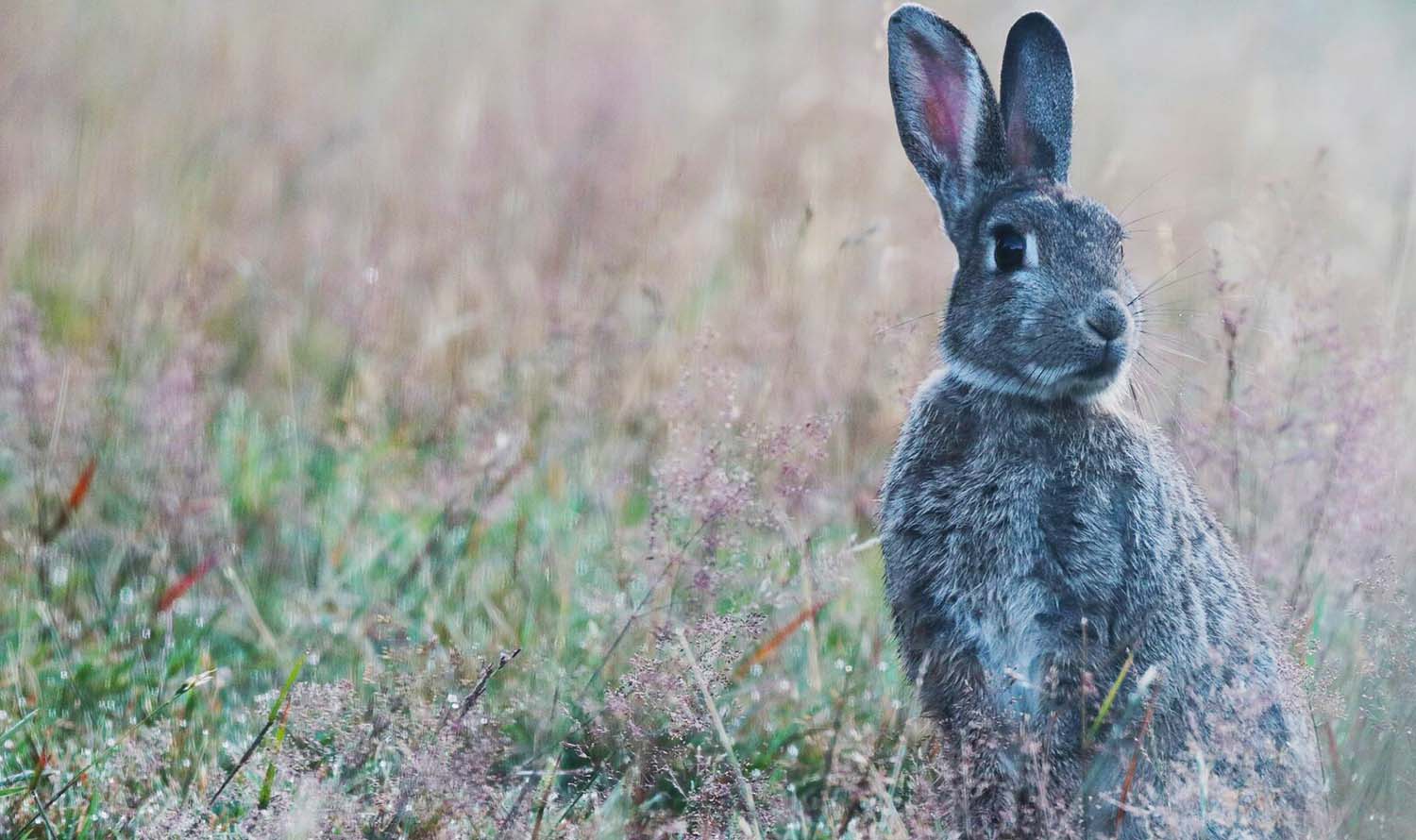| Management Programme |
| Sustained control |
| Objective |
| Provide advice and information on rabbit control, and require control where rabbits are causing an issue on adjacent properties. |
| Impacts |
| Human health; social and cultural wellbeing; amenity/recreation |
Rabbits have been a major agricultural and environmental pest in parts of New Zealand since the 1870s.
While rabbits are now widespread throughout the Waikato region, in most locations they are no more than a nuisance factor as the region’s high rainfall and lush growth restricts their abundance.

What do they look like?
The European rabbit is a small mammal about the size of a small domestic cat, with long ears and a small tail. They breed continually throughout the year, with adult females capable of producing 45 to 50 young each year.
- Rabbits are generally nocturnal.
- Most wild rabbits are light brown in colour with black flecks, a reddish neck and white underparts.
- Rabbits are a different species to hares (which are much larger).
- Rabbits are smaller, they tend to run in a bobbing fashion with their tail up and showing a white underside. Hares run with their tails down, showing their black upper surface.
- Rabbits are smaller than hares, weighing just 1.5kg to 2kg, compared with 2.5kg to 5kg for a hare.
Why are they pests?
Periodically, rabbit infestations can be found around sandy pumice soils south of Tokoroa and Lake Taupō (particularly the Western Bays), along the narrow strip of land either side of the Waikato River as far north as Rangiriri, and in the coastal communities of the Coromandel Peninsula.
Uncontrolled rabbit populations can expand rapidly in the holiday areas of Coromandel and Taupō as many properties are not occupied year-round. Holiday homeowners should consider rabbit control as a regular part of their property management.
The European rabbit was introduced to New Zealand as a food source and hunting resource in the 1830s. Females can produce 45 to 50 young each year, but only about 10 per cent of juveniles survive to six months of age.
In large numbers, rabbits compete directly for grazing, reducing the amount of palatable pasture and farm stocking capacity. They contribute to soil erosion, undermine buildings with their burrowing and affect dune restoration and native restoration programmes. They damage young plantation trees, horticultural crops, residential vegetable gardens and lawns, and regenerating coastal environments. Rabbits eat a wide range of foods including native grasses and seedlings.
Signs of rabbits
Rabbit burrows can be identified by the small ‘heap’ of soil at their openings. Other signs of rabbits include damage to pasture and plants. However, it is difficult to be sure whether this damage has been caused by rabbits, unless you’ve seen them regularly and found their pellets or droppings in the areas where they’ve been spotted.
Rabbits leave droppings in small heaps or scattered throughout their feeding areas. The droppings are generally dark in colour, oval-shaped and approximately 8mm to 10mm in length.
Measuring infestation density
The Modified McLean scale is used by councils to assess levels of rabbit infestation in relation to the number of ‘heaps’ of droppings visible in an area.
This scale provides an index of rabbit density that is most useful when making comparisons between similar types of country or recording changes from year to year in the same area or part of the region. It is not suitable for measuring short term changes because old signs (e.g. heaps, droppings, burrow holes etc) may last, and the numbers of rabbits seen is affected by factors like the time of day and pasture length.
| Level | Description |
|---|---|
| 1 | No sign seen. No rabbits seen. |
| 2 | Very infrequent sign present. Unlikely to see rabbits. |
| 3 | Sign infrequent with heaps more than 10m apart. Odd rabbit may be seen. |
| 4 | Sign frequent with some heaps more than 5m but less than 10m apart. Groups of rabbits may be seen. |
| 5 | Sign very frequent with heaps less than 5m apart in pockets. Rabbits spreading. |
| 6 | Sign very frequent with heaps often less than 5m apart over the whole area. Rabbits may be seen over the whole area. |
| 7 | Sign very frequent with 2-3 heaps often less than 5m over the whole area. Rabbits may be seen in large numbers over the whole area. |
| 8 | Sign very frequent with 3 or more heaps often less than 5m apart over the whole area. Rabbits are likely to be seen in large numbers over the whole area. |
How can I control them?
There are a range of control tools available for rabbits, including shooting, trapping, fumigation and poisoning.
Bionet has best practice advice on their website for landowners and community groups on how to undertake rabbit control.
You can also speak to one of our animal pest staff for advice and information on controlling rabbits on freephone 0800 800 401.
More information and advice
- For advice and information on rabbit exclusion, repellent and control methods, call our animal pest staff on freephone 0800 800 401.






To ask for help or report a problem, contact us
Tell us how we can improve the information on this page. (optional)